Venmo Together
Mutual Aid / Strategy
ROLE: UX Researcher
COMPLETED: Spring 2021
COLLABORATED WITH: Alex Koehl and Miles Lee
SPECIAL THANKS TO: Erika Harano
COMPLETED: Spring 2021
COLLABORATED WITH: Alex Koehl and Miles Lee
SPECIAL THANKS TO: Erika Harano
PROBLEM
We sought to better understand the unique needs, goals, pain points, frustrations and areas of opportunity for people who engage with mutual aid funds. Mutual aid has become very important in the Covid-19 pandemic and the most recent wave of BLM. People are struggling with uncertainty and loss at much higher rates. With so many platforms, the process of receiving and/or providing aid can be confusing and convoluted for many. Although the term “mutual aid” is becoming more frequently used, many people still do not know what it means exactly, causing confusion. The process of engaging with mutual aid is disjointed, not centralized, and many who engage, especially via social media, see it as charity and not solidarity.
SOLUTION
We sought to better understand the unique needs, goals, pain points, frustrations and areas of opportunity for people who engage with mutual aid funds. Mutual aid has become very important in the Covid-19 pandemic and the most recent wave of BLM. People are struggling with uncertainty and loss at much higher rates. With so many platforms, the process of receiving and/or providing aid can be confusing and convoluted for many. Although the term “mutual aid” is becoming more frequently used, many people still do not know what it means exactly, causing confusion. The process of engaging with mutual aid is disjointed, not centralized, and many who engage, especially via social media, see it as charity and not solidarity.
SOLUTION
After conducting in depth research, we created Venmo Together. We discovered Venmo is the most common location for monetary transactions within Mutual Aid .As a result, we developed a secondary platform within the app called venmo: together. Within this sub feature, users can discover Mutual Aid funds, manage recurring contributions, request monetary, request friends contribute to a fund, and more.
View the entire case study here.
View the entire case study here.
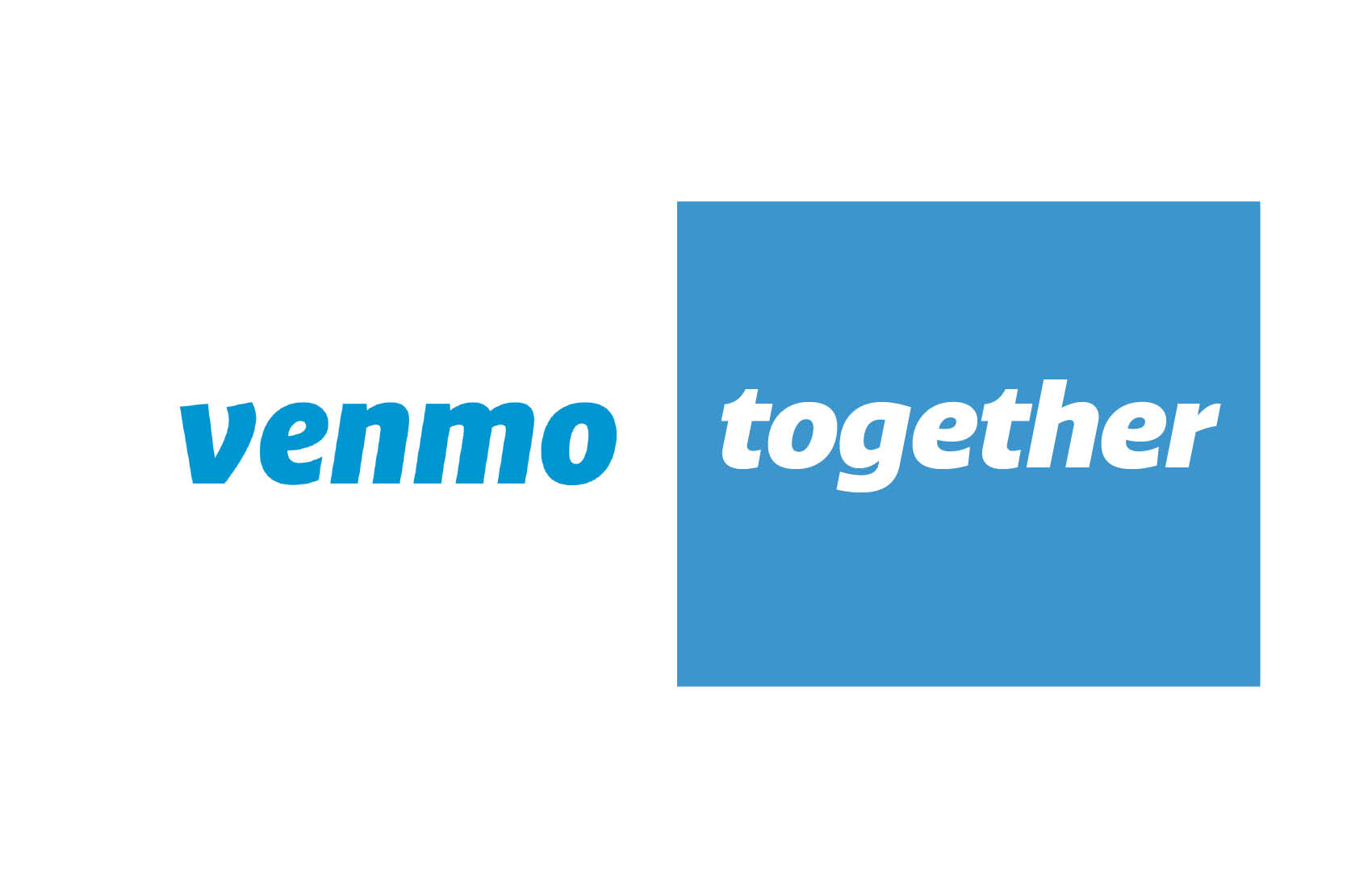
GOALS
First, we listed our assumptions about mutual aid/giving before diving into the project. We sought to understand the variety of existing mutual aid platforms and platforms not used exclusively for mutual aid. In addition, we examined how platforms work together and other streamlined ways for people to give back. On a more high level, we discovered barriers to giving mutual aid and how people decide if they should give mutual aid or not.
RESEARCH
9 User Interviews
38 Survey Respondents
9 Competitive Analyses
6 Breakup/Love Letters
We started by looking at the broad topic of mutual aid for our interviews and survey. After analyzing some of our responses, we then narrowed in on digital platforms of mutual aid engagement. Through Break Up/Love Letters we were able to get a better sense of what platforms people used and what their favorite parts or major pain points were with them. We found that people want networks or groups of specific types of mutual aid (ie. pregnant mothers in St. Louis) and more control over where their funds went, in order to have more equitable reach.
Read about our research takeaways in the case study PDF.
First, we listed our assumptions about mutual aid/giving before diving into the project. We sought to understand the variety of existing mutual aid platforms and platforms not used exclusively for mutual aid. In addition, we examined how platforms work together and other streamlined ways for people to give back. On a more high level, we discovered barriers to giving mutual aid and how people decide if they should give mutual aid or not.
RESEARCH
9 User Interviews
38 Survey Respondents
9 Competitive Analyses
6 Breakup/Love Letters
We started by looking at the broad topic of mutual aid for our interviews and survey. After analyzing some of our responses, we then narrowed in on digital platforms of mutual aid engagement. Through Break Up/Love Letters we were able to get a better sense of what platforms people used and what their favorite parts or major pain points were with them. We found that people want networks or groups of specific types of mutual aid (ie. pregnant mothers in St. Louis) and more control over where their funds went, in order to have more equitable reach.
Read about our research takeaways in the case study PDF.
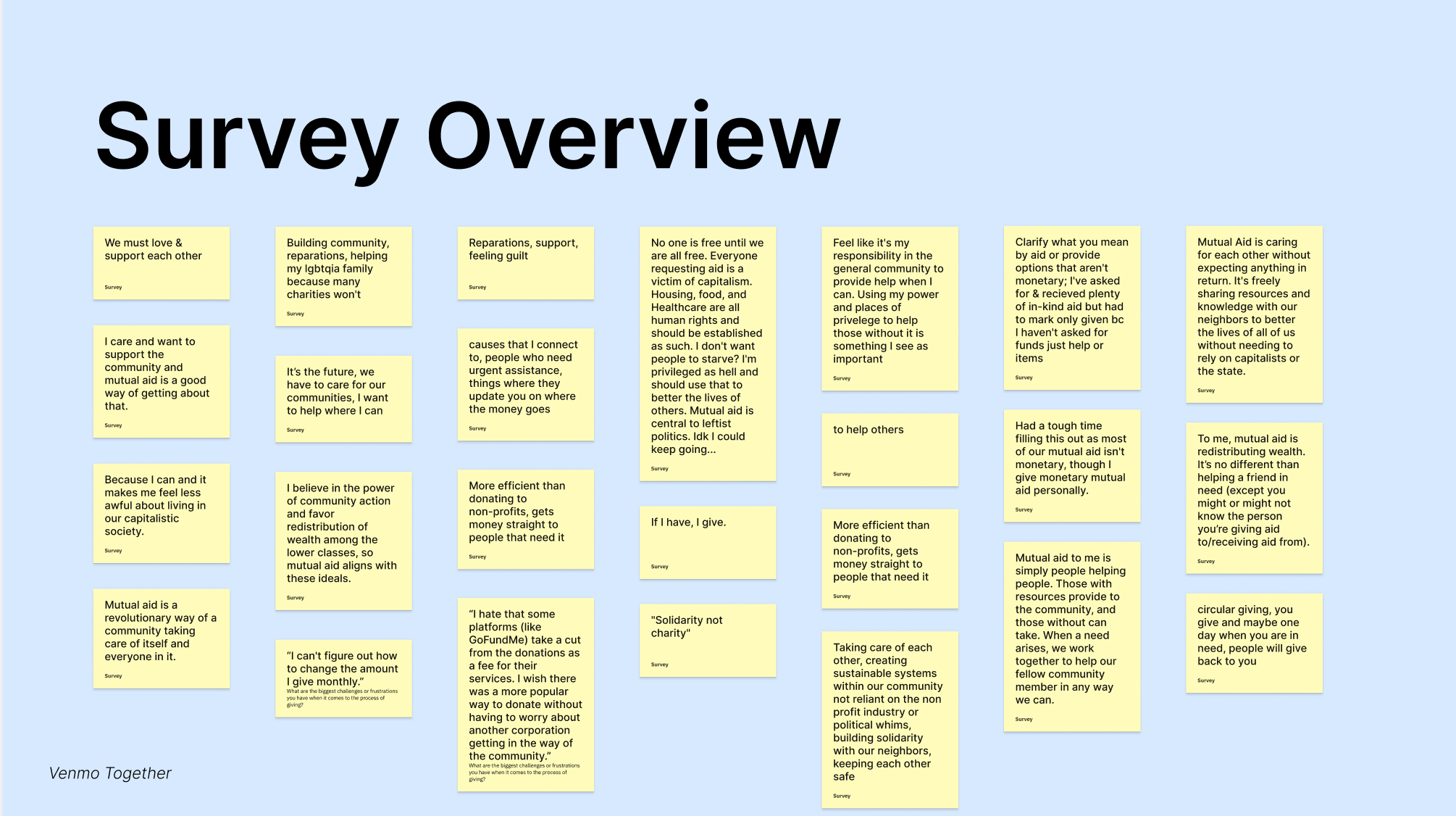
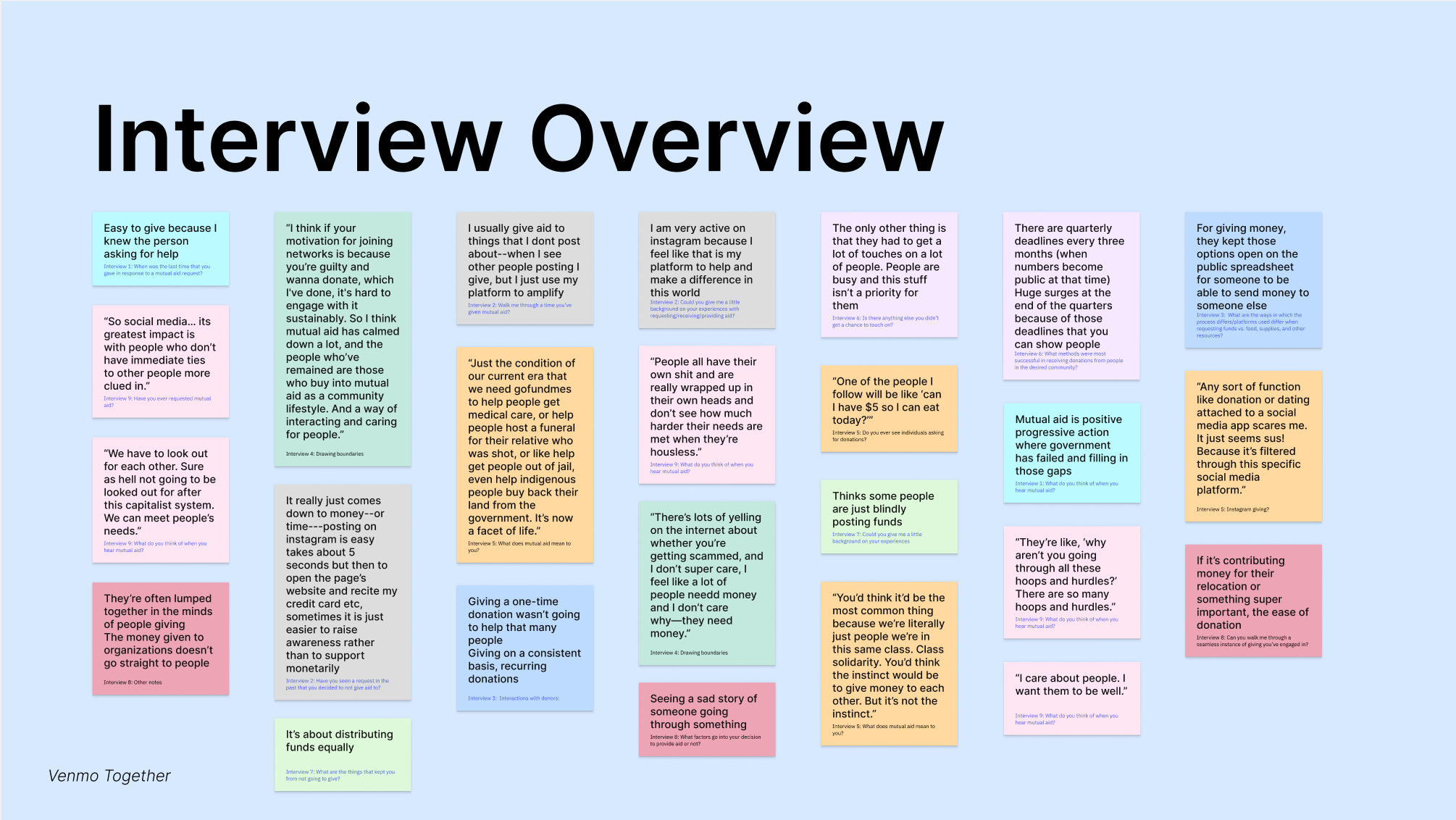
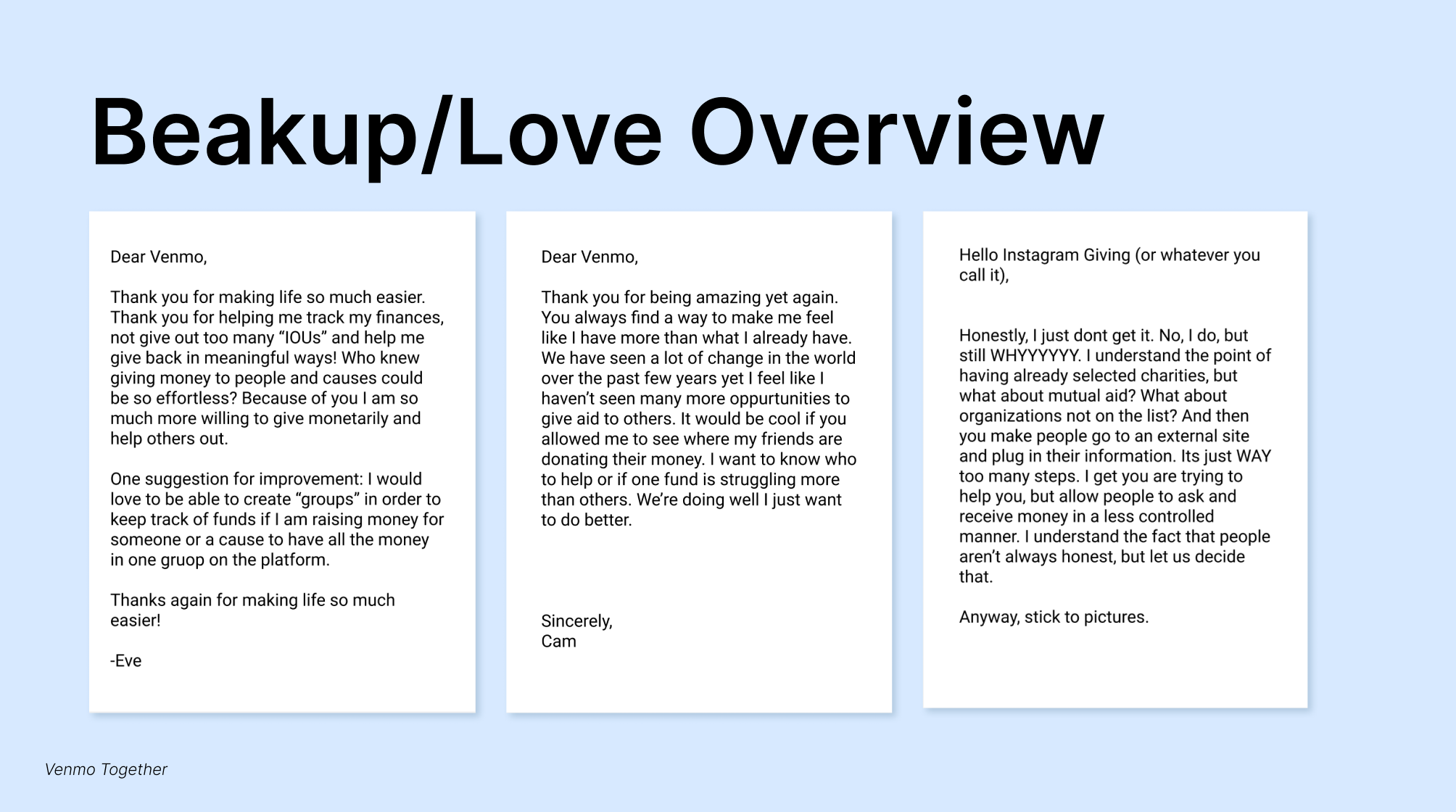
SYNTHESIS
Affinity Map
3 Empathy Maps
3 User Journeys
3 User Need Statements
3 8-Box Brainstorms
Through affinity mapping, empathy maps, journey maps, and user need statements, we synthesized all of the varied forms of data from our initial research. Major themes that arose were: perceptions of mutual aid, successful fundraising, mutual aid request strategies, and the ways in which people decide how much and where to engage their funds with. This led to the user need statements of:
“People who give mutual aid need a consolidated way to give so that they are not deterred from the many times multi-step process.”
Affinity Map
3 Empathy Maps
3 User Journeys
3 User Need Statements
3 8-Box Brainstorms
Through affinity mapping, empathy maps, journey maps, and user need statements, we synthesized all of the varied forms of data from our initial research. Major themes that arose were: perceptions of mutual aid, successful fundraising, mutual aid request strategies, and the ways in which people decide how much and where to engage their funds with. This led to the user need statements of:
“People who give mutual aid need a consolidated way to give so that they are not deterred from the many times multi-step process.”



IDEATION
My teammates and I completed an independent 8-box brainstorm to generate ideas for how to best fulfill our user-need statements .
Centering on the Design Justice Principle 10 of looking to what is already being used and working, we decided to re-design an existing platform currently in use: Venmo. After discussing our solutions, we settled on the idea of revamping Venmo with a new product feature. Venmo: Together would use several of the ideas we generated (customizable recurring contributions, requesting friends contribute, mutual aid networks, and a discover a fund feed) to create a robust mutual aid engagement platform in the digital space.
My teammates and I completed an independent 8-box brainstorm to generate ideas for how to best fulfill our user-need statements .
Centering on the Design Justice Principle 10 of looking to what is already being used and working, we decided to re-design an existing platform currently in use: Venmo. After discussing our solutions, we settled on the idea of revamping Venmo with a new product feature. Venmo: Together would use several of the ideas we generated (customizable recurring contributions, requesting friends contribute, mutual aid networks, and a discover a fund feed) to create a robust mutual aid engagement platform in the digital space.
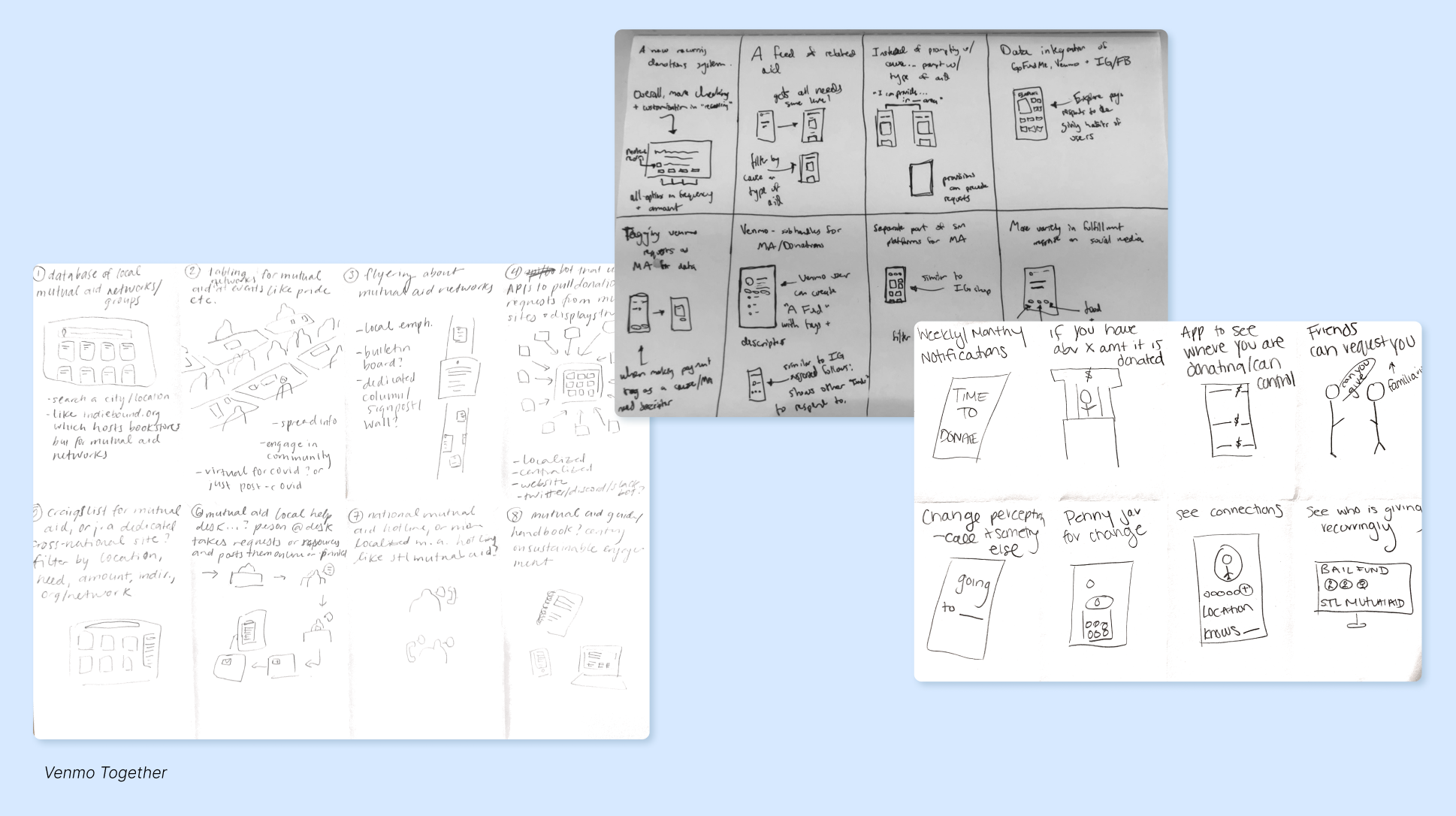
BUILDING OUT THE APP
To visually communicate our ideas, we created a Project Roadmap (with the list of 10 core features and their respective priority in development), an App Map (showcasing the underlying structure of the app as a whole), and an example User Flow Diagram (displaying the steps a user would take in the app to complete a contribution).
To visually communicate our ideas, we created a Project Roadmap (with the list of 10 core features and their respective priority in development), an App Map (showcasing the underlying structure of the app as a whole), and an example User Flow Diagram (displaying the steps a user would take in the app to complete a contribution).

TAKEAWAYS
—Start broad and embrace ambiguity
—Further rounds of research help to refine and narrow in
—Range in primary research methods are exciting and insightful
—Collaboration increased our output
—More minds and varied ways of attacking problems elevated the project
—Start broad and embrace ambiguity
—Further rounds of research help to refine and narrow in
—Range in primary research methods are exciting and insightful
—Collaboration increased our output
—More minds and varied ways of attacking problems elevated the project
